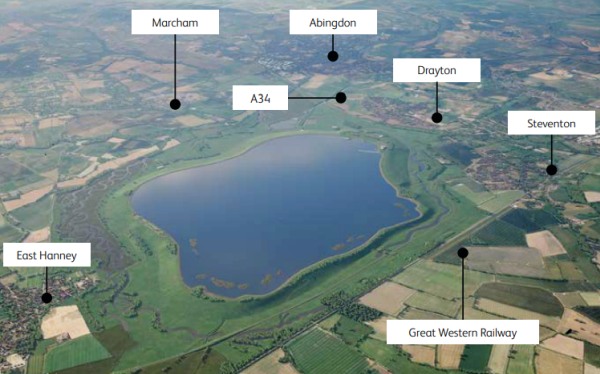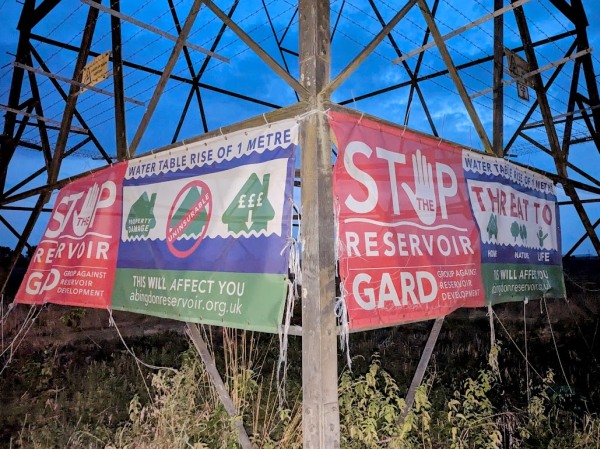
The South East Strategic Reservoir Option (SESRO) – now renamed the White Horse Reservoir rather than the Abingdon Reservoir – is currently the subject of a Statutory Consultation. Yesterday there was a display in the Guildhall in Abingdon given by Thames Water, working with Affinity Water.
The Roysse Room, featured models of the reservoir and embankments, and a 3D ‘drive-round’ video.
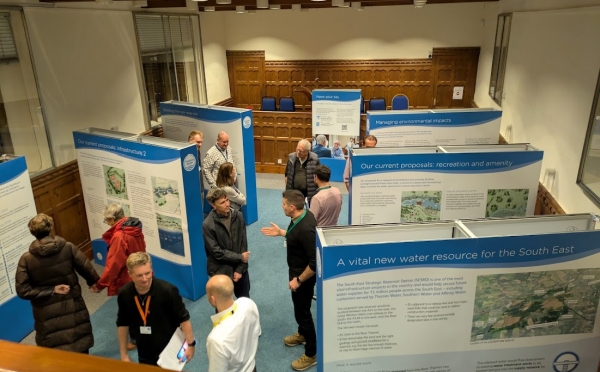
Information boards were set up in the Magistrates Court.
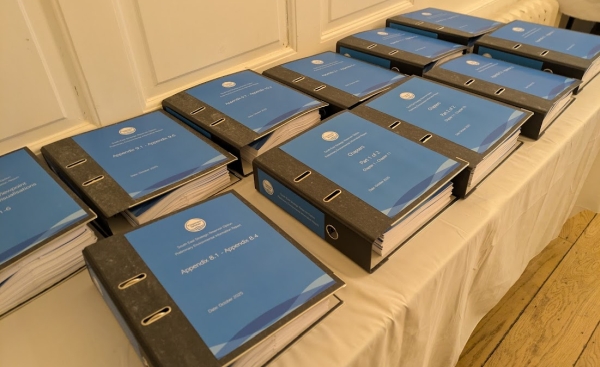
There were more design documents and appendices for those who need more details.
The large reservoir proposed near Abingdon has been progressing through the national RAPID “Gate” process, which reviews major water-resource schemes at 5 gateway stages to ensure the scheme is viable and affordable and wanted at each gateway before progressing.
At Gate 1 in 2021, the project was confirmed as technically feasible as a concept.
By Gate 2 in 2022, Thames Water had fixed the preferred size at 150 million m³ and estimated the delivery cost to about £2.2 billion (Ofwat SESRO Case Study).
Now at Gate 3 (2024–25), after detailed site and engineering work, the projected cost has risen sharply. The consultation documents suggest a range of £5.5–£7.5 billion. (It will be paid for by customers of the water companies over about 100 years.)
This led Vale of White Horse District Council in October 2024 to warn of ‘spiralling costs’ and call for a rethink, questioning whether such an expensive scheme is the best long-term solution for the region’s water supply (VWHDC statement).
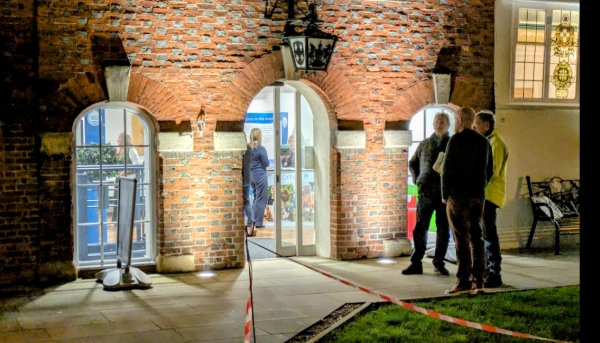
Inside the Guildhall, the case was being put for the reservoir. Outside, a representative of GARD (Group Against Reservoir Development) handed out summaries of the case against.

New GARD objections, alongside long-standing environmental and community concerns, involve the escalation in cost and the expanding size of the scheme. The reservoir area now requires 38 km² of land – not only for the reservoir itself but also to restore lost biodiversity, relocate solar farms (some will float on the reservoir), mitigate flood risks, and reroute watercourses.
The consultation materials are available online at SESRO statutory consultation 2025. The consultation runs to 13th January 2026.
Gard material can be found at groupagainstreservoirdevelopment.org.
